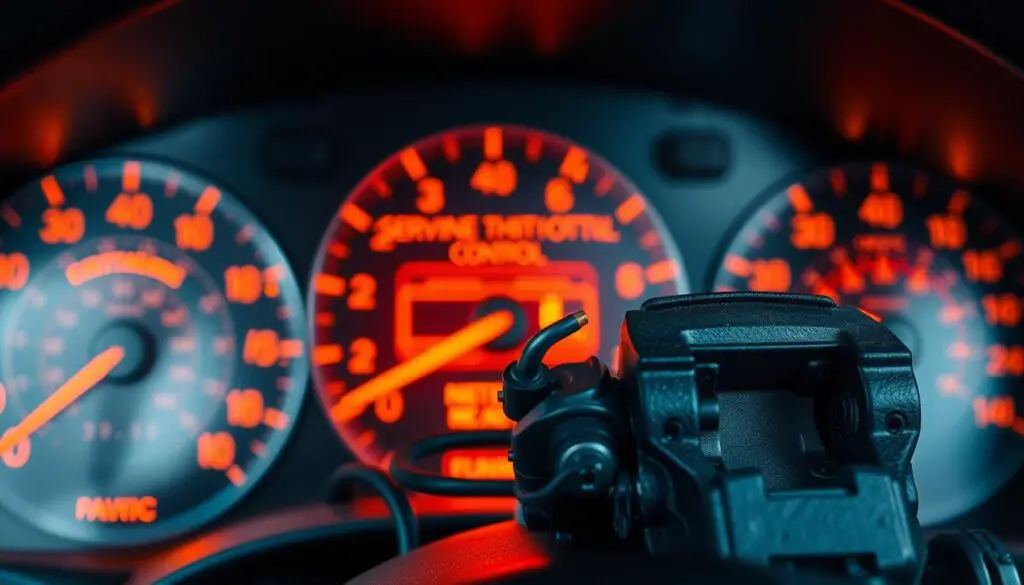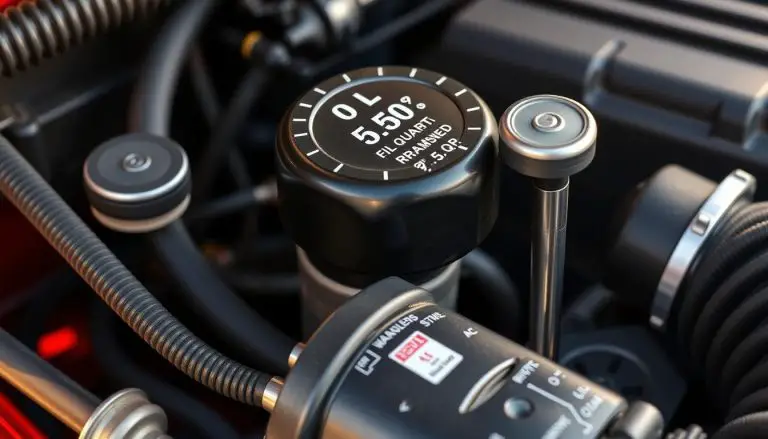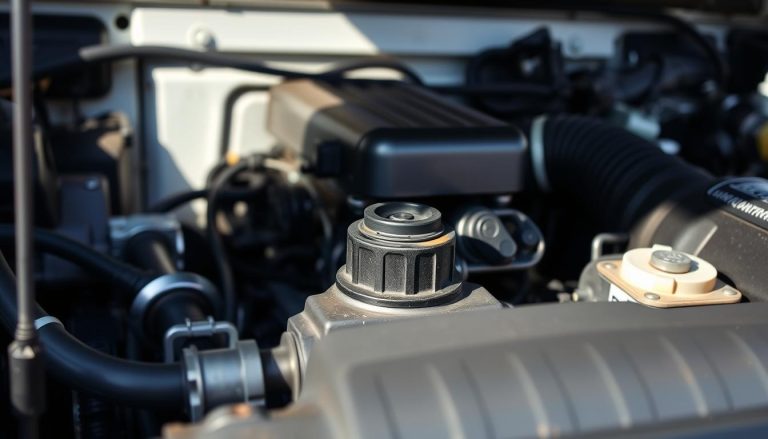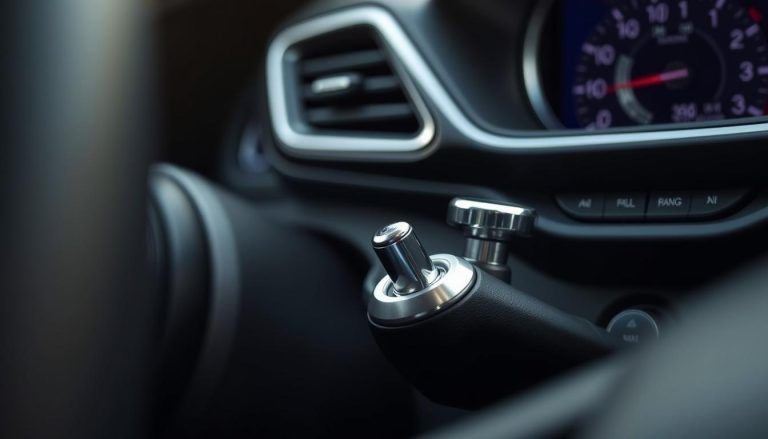The electronic throttle control (ETC) system is a critical component of modern vehicles, including Jeeps, as it regulates the throttle opening and engine performance. Issues with this system can lead to problems such as reduced engine power, poor acceleration, and even engine stalling.
A malfunctioning ETC system can trigger the “Service Electronic Throttle Control” warning on your dashboard, indicating the need for repair. This guide provides a comprehensive overview of diagnosing and repairing issues with the ETC system in your Jeep, helping you to restore optimal engine performance and avoid potential safety hazards.
Key Takeaways
- Understanding the role of the electronic throttle control system in Jeep performance.
- Identifying common issues that trigger the “Service Electronic Throttle Control” warning.
- Step-by-step guide to diagnosing ETC system problems.
- Repair strategies for common ETC system faults.
- Tips for maintaining the health of your Jeep’s ETC system.
Understanding Electronic Throttle Control Systems in Jeeps
The electronic throttle control (ETC) system is a critical component in modern Jeep vehicles. It replaces traditional mechanical throttle cables with electronic sensors and actuators, providing more precise control over the engine’s throttle.
What is Electronic Throttle Control?
Electronic Throttle Control is a system that electronically controls the throttle valve, regulating the airflow into the engine. This system enhances vehicle performance, improves fuel efficiency, and reduces emissions.
How the ETC System Works in Jeep Vehicles
The ETC system in Jeep vehicles works by using sensors to monitor the driver’s input on the accelerator pedal. This information is then sent to the Engine Control Unit (ECU), which calculates the appropriate throttle response based on various factors, including vehicle speed and gear position.

Common Components of the ETC System
The ETC system comprises several key components:
- Throttle Body Assembly: Houses the throttle valve and sensors.
- Throttle Position Sensor: Monitors the throttle valve’s position.
- Accelerator Pedal Position Sensor: Tracks the driver’s input on the accelerator pedal.
| Component | Function |
|---|---|
| Throttle Body Assembly | Controls airflow into the engine |
| Throttle Position Sensor | Monitors throttle valve position |
| Accelerator Pedal Position Sensor | Tracks driver input on the accelerator |
For more detailed information on the throttle pedal position sensor, you can refer to the provided link.
Throttle Body Assembly
The throttle body assembly is a crucial component of the ETC system, housing the throttle valve and sensors that monitor its position.
Throttle Position Sensor
The throttle position sensor provides real-time data on the throttle valve’s position to the ECU.
Accelerator Pedal Position Sensor
The accelerator pedal position sensor monitors the driver’s input and sends this information to the ECU, which then adjusts the throttle response accordingly.
Recognizing Symptoms of Electronic Throttle Control Problems
Identifying issues with your Jeep’s Electronic Throttle Control system is crucial for maintaining optimal vehicle performance. The ETC system plays a vital role in controlling the throttle valve, which regulates the air intake into the engine. When this system malfunctions, it can lead to various symptoms that indicate a problem.
Warning Lights and Error Messages
One of the first signs of an ETC issue is the illumination of warning lights on your dashboard. The “Service Electronic Throttle Control” message may appear, signaling a problem that requires attention. Error messages related to the throttle control system can also be retrieved using an OBD-II scanner, providing valuable diagnostic information.
Performance Issues Related to ETC Failure
ETC failure can manifest in several performance-related issues. These include reduced engine power and the activation of limp mode, which limits your vehicle’s performance to prevent further damage.
Reduced Power and Limp Mode
When the ETC system fails, your Jeep may experience a significant reduction in power. This is often accompanied by the vehicle entering limp mode, a safety feature that restricts engine performance to allow you to drive to a repair location.
Erratic Idle and Acceleration
Another symptom of ETC malfunction is erratic idle or acceleration issues. Your Jeep may surge, hesitate, or idle roughly, indicating a problem with the throttle control system.

Safety Implications of ETC Malfunctions
ETC malfunctions can have significant safety implications. A vehicle experiencing reduced power or erratic acceleration can be difficult to control, potentially leading to accidents. Therefore, it’s crucial to address ETC issues promptly to ensure your safety on the road.
Diagnostic Procedures for Jeep ETC Issues
Understanding how to diagnose ETC issues is key to maintaining optimal Jeep performance. Diagnosing Electronic Throttle Control (ETC) problems in Jeep vehicles involves a combination of technical tools and visual inspections.
Using OBD-II Scanners to Read Error Codes
The first step in diagnosing ETC issues is to use an OBD-II scanner to read error codes stored in the vehicle’s onboard computer. These codes provide valuable information about the nature of the problem, whether it’s related to the throttle body, sensors, or wiring.
For instance, a code indicating a throttle body malfunction could point to a need for cleaning or replacement. It’s essential to consult the scanner’s manual or online resources to understand the specific codes related to your Jeep model.
Visual Inspection of ETC Components
A thorough visual inspection of ETC components is crucial. This includes examining the throttle body for signs of wear or contamination, checking the condition of the accelerator pedal sensor, and inspecting wiring for damage or corrosion.
Testing Electrical Connections and Wiring
Faulty electrical connections or damaged wiring can cause ETC malfunctions. Testing involves checking for continuity, voltage supply, and signal integrity. A multimeter is a handy tool for this task, allowing you to measure resistance and voltage at various points in the ETC circuit.
Model-Specific Diagnostic Considerations
Different Jeep models may have unique diagnostic requirements. For example, the Grand Cherokee and Wrangler may have different ETC system configurations compared to the Cherokee and Compass.
Grand Cherokee ETC Diagnostics
The Grand Cherokee’s ETC system may require specific diagnostic procedures due to its complex engine management system.
Wrangler ETC Diagnostics
The Wrangler’s ETC diagnostics might involve checking for specific error codes related to its throttle body and sensor configurations.
Cherokee and Compass ETC Diagnostics
For the Cherokee and Compass, understanding their ETC system variations is crucial for accurate diagnosis.
How to Fix the Service Electronic Throttle Control on a Jeep
The service electronic throttle control issue on your Jeep can be addressed by understanding the root cause and applying the appropriate fixes. This section will guide you through the necessary steps to diagnose and repair the ETC system.
Preparing Your Jeep for ETC Repair
Before starting the repair, ensure your Jeep is safely positioned and apply the parking brake. Disconnect the battery to prevent any accidental starts or electrical surges. It’s also recommended to consult your owner’s manual or a repair manual specific to your Jeep model for any model-specific instructions.
Accessing and Cleaning the Throttle Body
The throttle body is a critical component of the ETC system. To access it, you’ll typically need to remove the intake duct. Once removed, inspect the throttle body for any signs of dirt or grime. Cleaning the throttle body involves using a throttle body cleaner and a soft-bristled brush to gently remove any debris. Be cautious not to damage the throttle body’s internal components.
Replacing Faulty Sensors and Components
Faulty sensors can often be the cause of ETC issues. Two key sensors to check are the Throttle Position Sensor (TPS) and the Accelerator Pedal Position Sensor (APPS).
Throttle Position Sensor Replacement
To replace the TPS, first, locate it on your throttle body. Disconnect the electrical connector, then remove the screws holding the sensor in place. Install the new TPS in the reverse order, ensuring it’s securely fastened and properly aligned.
Accelerator Pedal Position Sensor Replacement
The APPS is typically located on the accelerator pedal assembly. Disconnect the electrical connector, then remove the screws or clips holding the sensor in place. Replace it with a new APPS, ensuring it’s securely fastened.
Resetting the Throttle Control Module
After repairs, resetting the throttle control module may be necessary. This can usually be done using an OBD-II scanner. Check your scanner’s manual for specific instructions on how to perform a throttle body reset or re-calibration.
Testing Your Repair
Once you’ve completed the repairs and any necessary resets, test your Jeep to ensure the service electronic throttle control warning has cleared and the vehicle is operating smoothly. Monitor for any signs of the issue returning, such as erratic throttle response or warning lights.
Clean Throttle BodyRemove intake duct, inspect, and clean the throttle body using appropriate cleaners.
| Repair Step | Description |
|---|---|
| Prepare Vehicle | Safely position the Jeep, apply the parking brake, and disconnect the battery. |
| Replace Faulty Sensors | Identify and replace faulty sensors such as TPS or APPS. |
| Reset Throttle Control Module | Use an OBD-II scanner to reset or re-calibrate the throttle control module. |
| Test Repair | Start the Jeep, check for warning lights, and test drive to ensure smooth operation. |
By following these steps, you should be able to effectively diagnose and repair the service electronic throttle control issue on your Jeep.
Advanced Troubleshooting for Persistent ETC Issues
When basic repairs fail to resolve Electronic Throttle Control issues in your Jeep, it’s time to delve into advanced troubleshooting techniques. Persistent problems often indicate deeper issues that require a more thorough diagnostic approach.
Diagnosing Complex Electrical Problems
Complex electrical problems can manifest as intermittent ETC faults, making diagnosis challenging. To tackle these issues, use advanced diagnostic tools to monitor the electrical circuit’s performance under various conditions. This may involve using oscilloscopes or multimeters to check for voltage drops, signal integrity, and circuit continuity.
When to Replace the Entire Throttle Body Assembly
Replacing the entire throttle body assembly may be necessary if the unit is damaged beyond repair or if individual components are not available separately. Consider this option when faced with persistent performance issues or when diagnostic tests indicate a hardware failure.
Dealing with ECU-Related ETC Problems
ECU-related issues can significantly impact ETC performance. If you suspect an ECU problem, check for software updates and apply them if available. In some cases, reflashing the ECU may resolve ETC-related faults.
When to Seek Professional Assistance
Knowing when to seek professional help is crucial. If you’re unsure about the diagnosis or feel uncomfortable performing advanced repairs, consult a certified mechanic or a Jeep dealership. They have the necessary expertise and specialized equipment to handle complex ETC issues.
| Issue | Possible Cause | Recommended Action |
|---|---|---|
| Persistent ETC errors | Complex electrical issues | Use advanced diagnostic tools |
| Throttle body malfunction | Hardware failure | Replace throttle body assembly |
| ECU-related ETC problems | Software issues or hardware faults | Check for software updates or consult a professional |
Conclusion
Properly diagnosing and repairing electronic throttle control issues is crucial for maintaining your Jeep’s performance and safety. This guide has provided a comprehensive overview of the ETC system, common problems, and repair procedures.
By following the steps outlined in this Jeep repair guide, you can effectively address electronic throttle control issues and ensure your vehicle operates smoothly. Regular maintenance and prompt repairs can help prevent more complex problems from developing.
For persistent issues or complex electrical problems, consider seeking professional assistance to ensure accurate diagnosis and repair. With the knowledge gained from this guide, you are now equipped to tackle ETC-related repairs and maintain your Jeep’s optimal performance.
FAQ
What is the electronic throttle control system in a Jeep?
The electronic throttle control (ETC) system is a critical component of modern Jeep vehicles, responsible for controlling the throttle valve and regulating engine power.
How do I know if my Jeep has an electronic throttle control issue?
Common symptoms include warning lights on the dashboard, reduced engine power, limp mode, erratic idle, and acceleration issues.
Can I use an OBD-II scanner to diagnose ETC issues in my Jeep?
Yes, an OBD-II scanner can be used to read error codes related to the ETC system, helping you identify the source of the problem.
How do I clean the throttle body on my Jeep?
To clean the throttle body, you’ll need to access it, typically by removing the intake duct, and then use a throttle body cleaner to remove any debris or carbon buildup.
When should I replace the throttle position sensor or accelerator pedal position sensor?
If diagnostic tests indicate a faulty sensor, replacement is necessary to ensure proper ETC system function.
How do I reset the throttle control module on my Jeep?
The process typically involves using a scan tool to clear any trouble codes and then performing a series of steps to recalibrate the throttle control module.
What are some common mistakes to avoid when repairing the ETC system?
Common mistakes include failing to properly diagnose the issue, not following manufacturer repair procedures, and neglecting to test the repair thoroughly.
Can I fix ETC issues on my Jeep without professional help?
While some repairs can be done DIY, complex issues may require professional assistance, especially if they involve advanced electrical or ECU-related problems.
Are there any specific considerations for diagnosing ETC issues on different Jeep models?
Yes, different Jeep models, such as the Grand Cherokee, Wrangler, Cherokee, and Compass, may have unique diagnostic considerations that should be taken into account.
How can I ensure my ETC repair is successful and long-lasting?
To ensure a successful repair, follow the manufacturer’s instructions, use proper diagnostic techniques, and thoroughly test the system after completing the repair.


